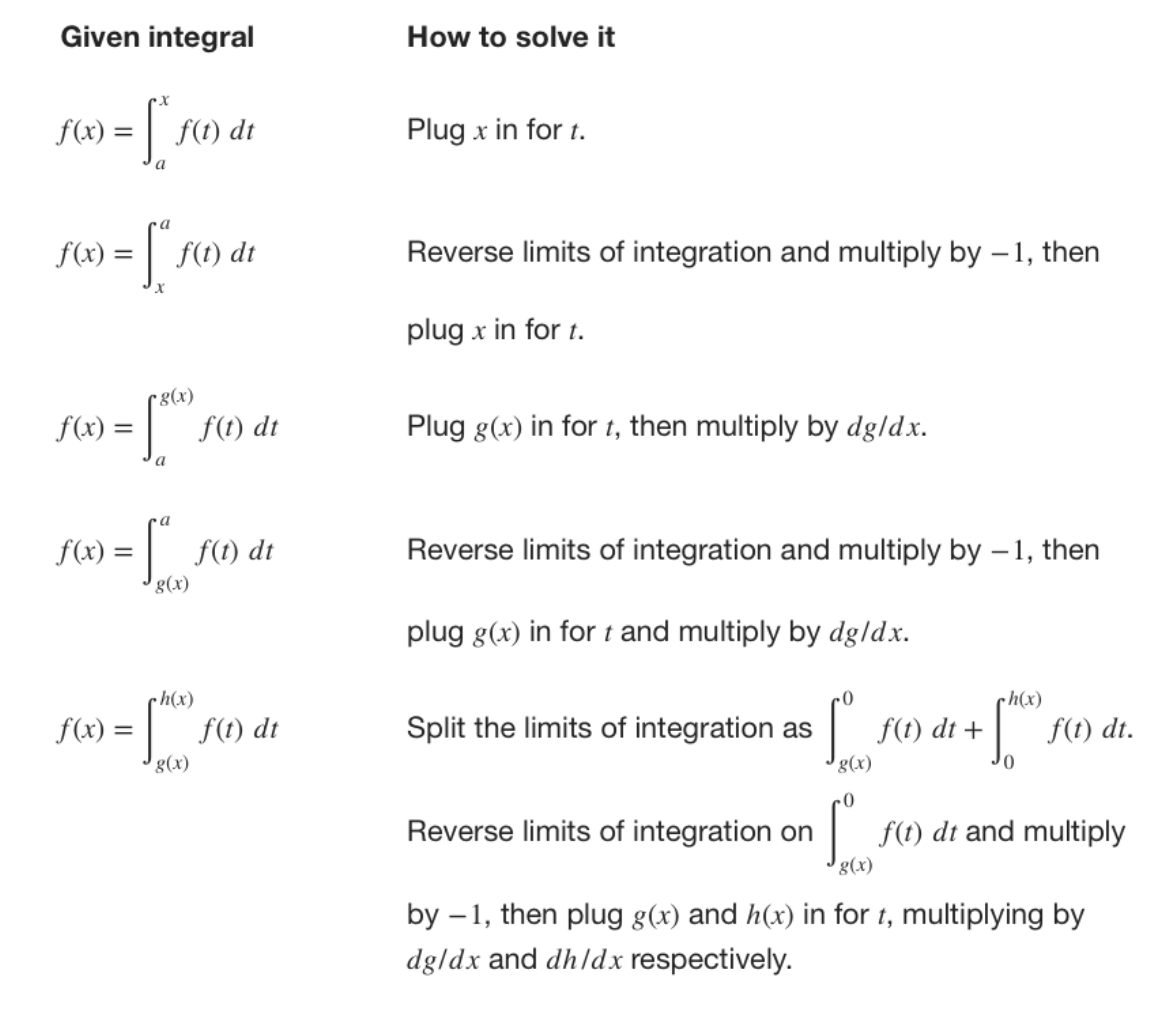Fundamental Theorem of Calculus, Part 1
How Part 1 of the Fundamental Theorem of Calculus defines the integral
The fundamental theorem of calculus (FTC) is the formula that relates the derivative to the integral and provides us with a method for evaluating definite integrals.
Part 1
Part 1 of the Fundamental Theorem of Calculus states that
???\int^b_a f(x)\ dx=F(b)-F(a)???
where ???F(x)??? is an antiderivative of ???f(x)???, which means that the integral of ???f(x)??? on the interval ???[a,b]??? is ???F(x)???.
Part 1 of the FTC tells us that we can figure out the exact value of an indefinite integral (area under the curve) when we know the interval over which to evaluate (in this case the interval ???[a,b]???).
Hi! I'm krista.
I create online courses to help you rock your math class. Read more.
What rules do I have to follow?
There are rules to keep in mind. First, the function ???f(x)??? must be continuous during the the interval in question. This means that between ???a??? and ???b??? the graph of the function cannot have any breaks (where it does not exist), holes (where it does not exist at a single point) or jumps (where the function exists at two separate ???y???-values for a single ???x???-value). Second, the interval must be closed, which means that both limits must be constants (real numbers only, no infinity allowed).
When it comes to solving a problem using Part 1 of the Fundamental Theorem, we can use the chart below to help us figure out how to do it.
Video walkthrough of Part 1 of the FTC:
Take the course
Want to learn more about Calculus 2? I have a step-by-step course for that. :)
How to use Part 1 of the FTC to find the value of the integral
Example
Use Part 1 of the Fundamental Theorem of Calculus to find the value of the integral.
???F(x)=\int^3_1 x^3\ dx???
First, we perform the integration.
???F(x)=\frac{x^4}{4}\bigg|^3_1 ???
Next, we plug in the upper and lower limits, subtracting the lower limit from the upper limit.
???F=\frac{(3)^4}{4}-\frac{(1)^4}{4}???
???F=\frac{81}{4}-\frac{1}{4}???
???F=\frac{80}{4}???
The Fundamental Theorem of Calculus is the formula that relates the derivative to the integral
Let’s double check that this satisfies Part 1 of the FTC.
If we break the equation into parts,
???F(b)=\int x^3\ dx??? where ???b=3??? and ???F(a)=\int x^3\ dx??? where ???a=1???
and evaluate the two equations separately, we can double check our answer.
First we integrate as an indefinite integral.
???F(x)=\int x^3\ dx???
???F(x)=\frac{x^4}{4}+C???
Next we plug in ???b=3??? and ???a=1???.
???F(3)=\frac{(3)^4}{4}+C???
???F(1)=\frac{(1)^4}{4}+C???
Finally, we find ???F(b)-F(a)???.
???F(3)-F(1)=\frac{(3)^4}{4}+C-\left[\frac{(1)^4}{4}+C\right]???
???F(3)-F(1)=\frac{(3)^4}{4}+C-\frac{(1)^4}{4}-C???
???F(3)-F(1)=\frac{80}{4}???
As you can see, we’ve verified that value of ???F??? that we found earlier. This answer is what we expected and it confirms Part 1 of the FTC.







